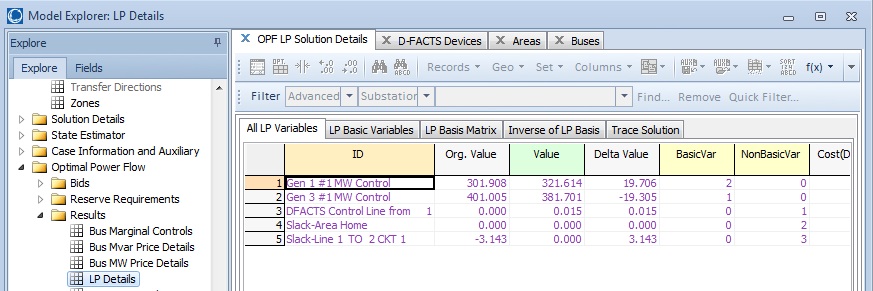PowerWorld Simulator supports four operational modes of D-FACTS devices within the power flow. PowerWorld also supports D-FACTS devices as controls in the OPF (Optimal Power Flow) and the SCOPF (Security Constrained OPF) tools.
Power Flow Modeling of D-FACTS Devices
PowerWorld Simulator implements the control of the D-FACTS devices in the voltage control loop of the power flow solution. That is, after the inner power flow loop is solved to determine the state variables, the line current is calculated, and the D-FACTS values are adjusted, if necessary. The D-FACTS adjustment needed is computed according to their predefined piecewise linear lookup functions in Limit mode or according to their automatic control settings when in Regulate mode. If the D-FACTS values are changed, an additional power flow inner loop is solved.
Within the power flow, Simulator supports four D-FACTS operational modes:
Bypass
Takes the D-FACTS on the line out of service and sets its Xinj to zero.
Limit
Uses a fixed value of Xinj for the D-FACTS on the line. This fixed value can be set externally. In particular, values can be set manually by the user, or by an external source such as SimAuto, script commands, an aux file, etc.
Fixed
Uses any fixed value of Xinj for the D-FACTS on the line. This fixed value can be set in a variety of ways. For example, values can be set manually by the user, or through an external source via SimAuto, script commands, an aux file, etc. Simulator also uses this mode when solving the OPF with D-FACTS as controls, so the OPF is being treated like an external program which determines the optimal values forXinj and then fixes the D-FACTS settings at those values. Additionally, if D-FACTS devices are cycling on and off within the power flow solution, they will be placed into this mode to prevent further oscillation. This problem can be avoided by adjusting the defined limit characteristic settings or the control range.
Regulate
Uses sensitivities to adjust D-FACTS devices on the line to keep the line's flow within a user-specified range.
The capability of D-FACTS devices to respond as controls during the OPF solution has been added. The OPF is only available if you have the OPF (Optimal Power Flow) add-on tool for PowerWorld Simulator. D-FACTS devices can be treated as a control variable by the OPF so that lines with D-FACTS devices can be coordinated to relieve overloads and achieve minimal cost. D-FACTS can relieve line violations, therefore avoiding the need to re-dispatch more costly generators.
Setting up OPF Control
As with all controls in PowerWorld Simulator, there are three places D-FACTS OPF response has to be enabled in order to use D-FACTS as an OPF control. First, D-FACTS control should be enabled at the case level from the Common Options tab of the LP OPF Dialog by unchecking “Disable D-FACTS Controls.” “D-FACTS Cost” specifies the cost of D-FACTS operation, which is assumed to be very low or negligible.
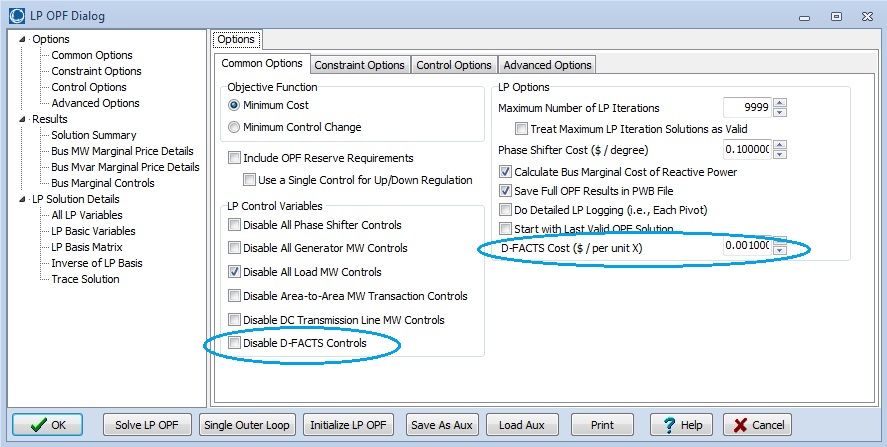
D-FACTS are also enabled on a per-area basis and a per-line basis. On the Areas tab of the Model Explorer, the DFACTS Xinj Control field should be set to YES.
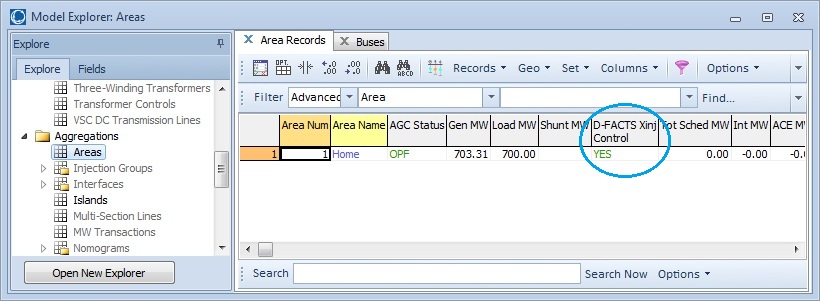
D-FACTS devices have a group of OPF-related fields. These fields are within the "OPF" folder and can be seen using the "Fields" view in the Model Explorer or from "Display/Column Options." Within this folder is the Include in OPF field.
On a per-line basis, D-FACTS devices are enabled by setting Include in OPF to YES and Response to Fixed Xinj. The Fixed Xinj response mode tells Simulator to handle setting Xinj for the D-FACTS on the line from an external source (in this case, the OPF) and not to respond based on the line current characteristic.
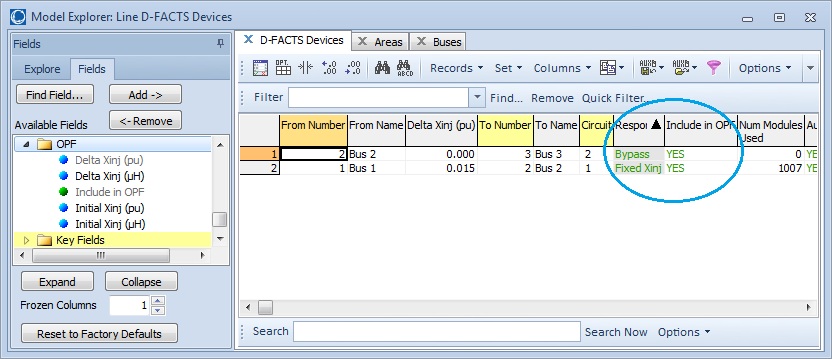
Cost Model
The cost is zero for D-FACTS to be off, with a slight positive cost as D-FACTS turn on. Outside of the limits, the cost is infinite. This is the out-of-limits D-FACTS cost which is $2,000,000 per unit X.
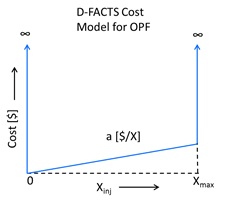
OPF Results
Results can be viewed under “OPF LP Solution Details.” The display shows the amount of change that occurred in the OPF for each D-FACTS device that responded.
